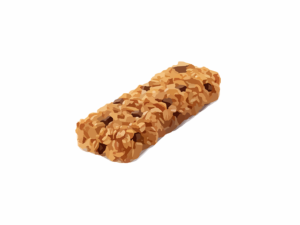Food Safety in the Home

If you work with food and are about to start your food safety certificate or another training programme, think about your food practices at home. Do you prepare your food as safely at home as you do in a commercial kitchen? Do you keep your family safe by managing your hygiene?
Food safety at home is as essential as in a commercial setting because it reaffirms how you should behave around food at all times. If you need a refresher, we cover some of the more basic food safety principals you use in your home below, such as clean, cook, cover, and chill.
Clean
Cross-contamination plays a significant role in food poisoning, which is why cleanliness in the kitchen is so important – be it commercial or your home kitchen. Always keep your chopping boards clean – especially when switching between raw and ready-to-eat products. Where possible, purchase colour-coded chopping boards for separate ingredients.
If you intend on cleaning up meat spillage or debris with a cloth or sponge, then clean it after use and don’t use it for general cleaning. Where possible, use single-use paper towels to clean up meat and chicken juices.
Along with surfaces, chopping boards, and any tools you use in the kitchen, you should also clean your hands often and thoroughly. Clean them before you handle any food, after touching any raw poultry or meat, and after you go to the toilet, touch pets, or leave the kitchen to do something else.
Cook
In 2012, there were around 11 reported cases of salmonella food poisoning for every 100,000 people. Salmonella is an infection in your digestive tract caused by salmonella bacteria. You can get it from eating undercooked or raw chicken, meat and eggs, cross-contaminated food, pets and pet products, and contaminated drinking water.
When undercooking something carries one of the most significant risks of food poisoning, it’s crucial to understand how to cook food properly to avoid it. Using heat kills bacteria, so it’s vital to bring poultry, fish, and meat up to a satisfactory temperature to reduce the risk of food poisoning.
You can learn more about temperature ranges while completing a food safety certificate. However, fish should be at least 65 degrees Celsius, minced meat and sausages at 75 degrees with no pinkness, and poultry until the juices run clear. You can use a meat thermometer to check while you’re cooking.
Cover
A food safety certificate can be a helpful programme for learning everything there is to know about food safety in the workplace. However, it can also prove beneficial for your processes at home as well.
How often do you leave meat out on the bench, uncovered to thaw? What about storing raw and cooked meat and ingredients in your fridge with no protection? It’s easy enough to do, but cross-contamination can make you exceptionally unwell.
If food is not in a sealed container, then cover it with foil or cling film for storage – be it in your cupboard or fridge. Keep vegetables away from meat and protected in the bottom vegetable tray. Covered meat should be at the bottom of your fridge, and ready-to-eat food at the top. If you store meat at the bottom, you reduce the risk of meat juices contaminating anything else in your fridge.
Chill
Most foodborne illness-causing bacteria cannot multiply at low temperatures, which is why chilling food is crucial. You can learn more about this when you carry out your food safety certificate. If you keep your perishable goods at 2-4 degrees-Celsius, you can keep perishables safe for consumption for two or three days.
How you chill your food makes all the difference as well. Cool hot foods before you refrigerate them to stop other food in your fridge from heating up. Never overload your refrigerator, as that can prevent cold air from circulating and maintaining a safe temperature.
Finally, keep your fridge clean. Wash down the surfaces with hot, soapy water at least every two weeks and wipe up spills when they happen.
Common Foodborne Illness-Causing Pathogens
When you get up to speed with a food safety certificate, you can learn all about the different pathogens that cause illness. Some of the more common ones include salmonella, norovirus, listeria, E-coli, Clostridium, and campylobacter.
Salmonella can take between six hours and two days to take hold and causes nausea, cramps, fever, vomiting, headaches, and diarrhoea. Norovirus takes hold within 50 hours, caused by shellfish, infected food handlers, cold meats, and salads. It has roughly the same symptoms as salmonella.
E-coli can take as long as eight days to take effect, as can listeria, and both can have quite severe symptoms. Listeria can even result in meningitis, stillbirth, and spontaneous abortion.
Clostridium, common in meat, soups, pies, gravy, and stew, will cause stomach pain, diarrhoea, vomiting and nausea in as little as six hours. Campylobacter has flu-like symptoms and may even take as long as ten days to take effect.
Conclusion
Food poisoning isn’t only inconvenient, but it can be life-threatening in some cases. A food safety certificate can provide a refresher on the risks of improperly prepared food, and how to be safer in the kitchen. When it comes to food safety at home and your place of business, always clean, cook, cover, and chill.






